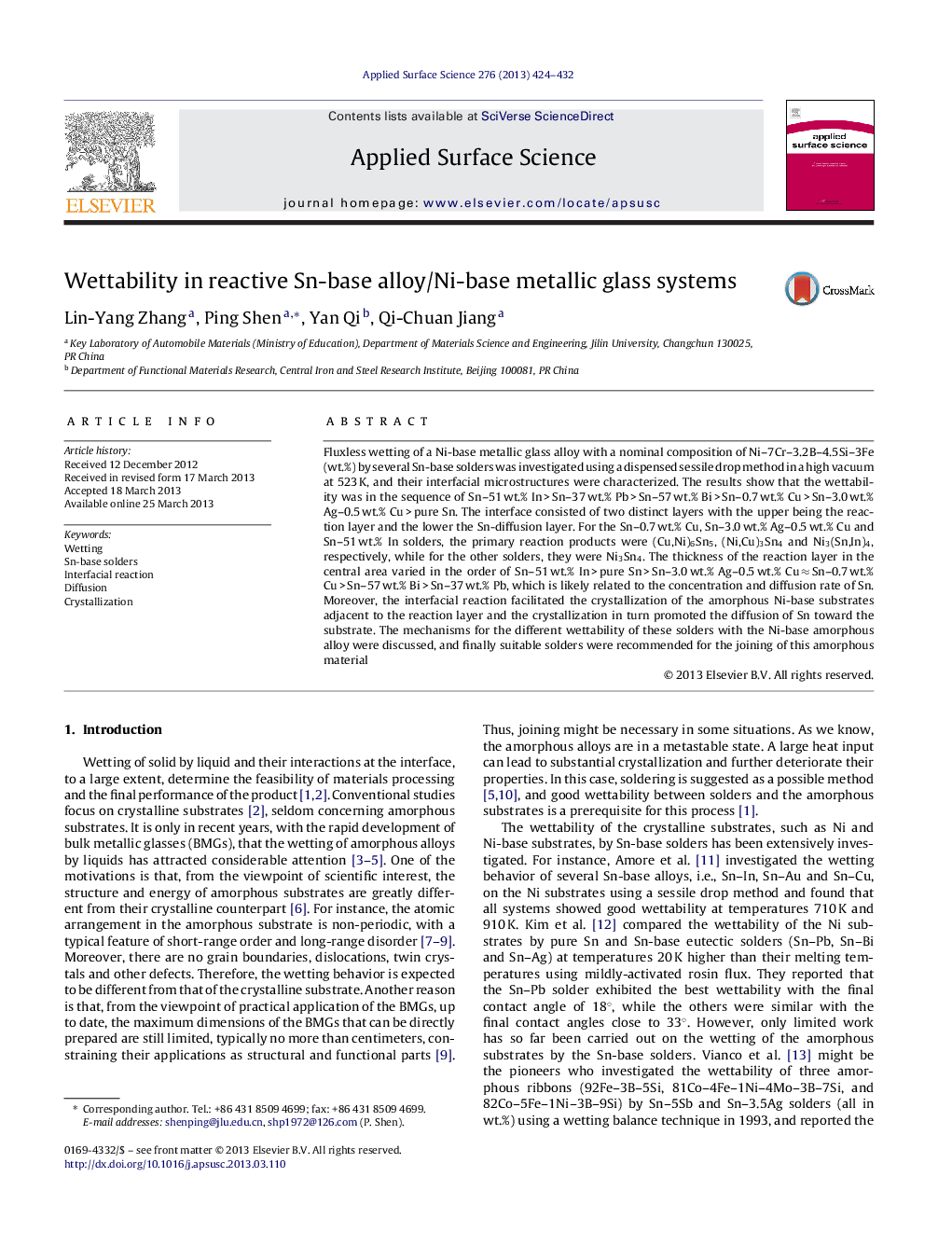| کد مقاله | کد نشریه | سال انتشار | مقاله انگلیسی | نسخه تمام متن |
|---|---|---|---|---|
| 5360101 | 1503687 | 2013 | 9 صفحه PDF | دانلود رایگان |
عنوان انگلیسی مقاله ISI
Wettability in reactive Sn-base alloy/Ni-base metallic glass systems
ترجمه فارسی عنوان
رطوبت در سیستم های شیشه ای فلزی آلیاژ / اسید نیتریکی واکنش پذیر
دانلود مقاله + سفارش ترجمه
دانلود مقاله ISI انگلیسی
رایگان برای ایرانیان
کلمات کلیدی
موضوعات مرتبط
مهندسی و علوم پایه
شیمی
شیمی تئوریک و عملی
چکیده انگلیسی
Fluxless wetting of a Ni-base metallic glass alloy with a nominal composition of Ni-7Cr-3.2B-4.5Si-3Fe (wt.%) by several Sn-base solders was investigated using a dispensed sessile drop method in a high vacuum at 523 K, and their interfacial microstructures were characterized. The results show that the wettability was in the sequence of Sn-51 wt.% In > Sn-37 wt.% Pb > Sn-57 wt.% Bi > Sn-0.7 wt.% Cu > Sn-3.0 wt.% Ag-0.5 wt.% Cu > pure Sn. The interface consisted of two distinct layers with the upper being the reaction layer and the lower the Sn-diffusion layer. For the Sn-0.7 wt.% Cu, Sn-3.0 wt.% Ag-0.5 wt.% Cu and Sn-51 wt.% In solders, the primary reaction products were (Cu,Ni)6Sn5, (Ni,Cu)3Sn4 and Ni3(Sn,In)4, respectively, while for the other solders, they were Ni3Sn4. The thickness of the reaction layer in the central area varied in the order of Sn-51 wt.% In > pure Sn > Sn-3.0 wt.% Ag-0.5 wt.% Cu â Sn-0.7 wt.% Cu > Sn-57 wt.% Bi > Sn-37 wt.% Pb, which is likely related to the concentration and diffusion rate of Sn. Moreover, the interfacial reaction facilitated the crystallization of the amorphous Ni-base substrates adjacent to the reaction layer and the crystallization in turn promoted the diffusion of Sn toward the substrate. The mechanisms for the different wettability of these solders with the Ni-base amorphous alloy were discussed, and finally suitable solders were recommended for the joining of this amorphous material
ناشر
Database: Elsevier - ScienceDirect (ساینس دایرکت)
Journal: Applied Surface Science - Volume 276, 1 July 2013, Pages 424-432
Journal: Applied Surface Science - Volume 276, 1 July 2013, Pages 424-432
نویسندگان
Lin-Yang Zhang, Ping Shen, Yan Qi, Qi-Chuan Jiang,
